How to store fresh pasta? Storing fresh pasta is a lot trickier than most people realize. This article will teach you everything you need to know about storing fresh pasta and avoiding common mistakes. It’ll also tell you what the best way is to keep your pasta fresher longer!
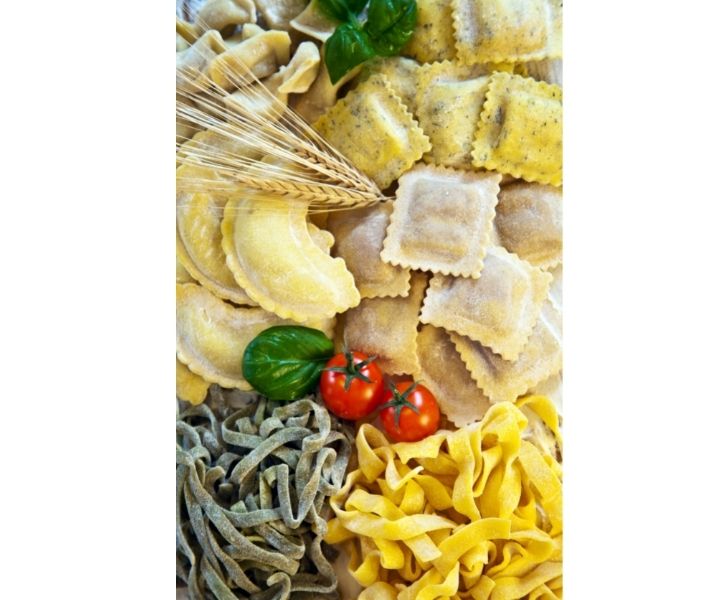
There are so many different types of pasta available today, and it’s hard to know how long you can store them before they go bad.
If you’re looking for an easy guide on storing fresh-made pasta, then this article is just what you and your kitchen needs! We’ve put together all of our tips and tricks into one convenient place so that anyone can learn how to keep their pasta fresher for longer.
How do I Work With Fresh Pasta Dough?
Fresh pasta is delicious, but it can be hard to work with if you’ve never done it before.
If you’re looking for a tasty and healthy alternative to noodles, fresh pasta might be the answer. It’s easy to make and even easier to eat! But how do I get started? Which Italian kitchen utensils do I need? Do I have to knead the dough by hand, or can I use a food processor?
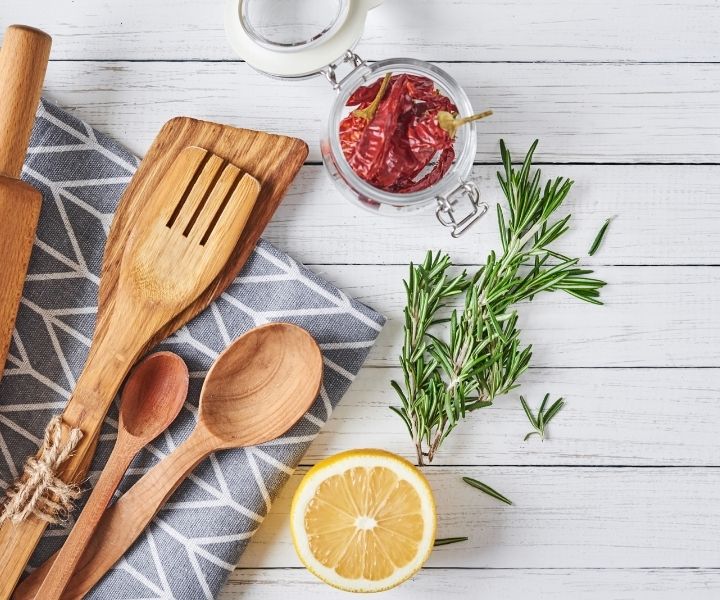
We’ll walk you through everything from choosing your ingredients and equipment to rolling out your first batch of homemade pasta. Then, once you know what works best for your kitchen, we’ll show you how easy it is to put together delicious meals that are sure to impress everyone at dinner time!
Making the Dough for Fresh Pasta
When it comes to making fresh pasta dough, consistency will determine how first and well you will master it. It’s impossible to master fresh pasta in one sitting. It takes time and effort, but it pays off in the long run. This recipe can be used in several different ways.
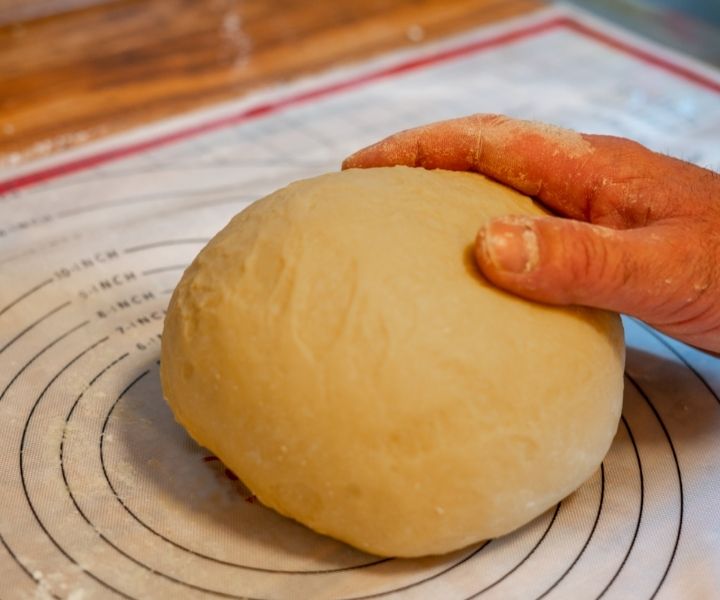
Ingredients
- 3 large eggs
- 2 tablespoon olive oil
- 2 cups flour
- 2 tablespoon water or as needed
- 1 teaspoon salt
Method
- On a board or in a dish, sift the flour. In the center, make a well and crack the eggs into it. To make the eggs smooth, whisk them with a fork until they are completely smooth.
- Mix the eggs with the flour with the tips of your fingers, a bit at a time, until everything is mixed.
- Carefully knead the pieces of dough together until they all come together to make a huge lump of smooth dough. If you don’t knead and work the dough with your hands after it’s created, the gluten in the flour will grow, and your pasta will be flabby and soft instead of springy and al dente when you cook it.
- Kneading is not a difficult task. All you have to do now is squish the dough into the table, reshape it, pull it, stretch it, then smash it again with your hands.
You’ll need to be more accurate if you’re mixing the dough with a food processor or stand mixer. A decent basic pasta recipe is three eggs per two cups flour, or one egg per cup of flour, plus water as needed to bring the dough together.
The Ways of Rolling and Shaping Pasta
Form a rough round out of the dough. Flour a clean work surface with a little dusting of flour. Begin rolling the dough with a rolling pin as if it were a pastry crust, starting in the center and working your way out to the edges.
Work your way around the dough, turning it a quarter-turn each time. Sprinkle a little flour on top when the dough begins to stick to the surface or the rolling pin.
Press out and away from you with the rolling pin, turning the dough between rolls until the sheet is 1/8 inch thin. Because this isn’t very hygienic, do the same with your hand – you should be able to see it from behind the sheet of dough.
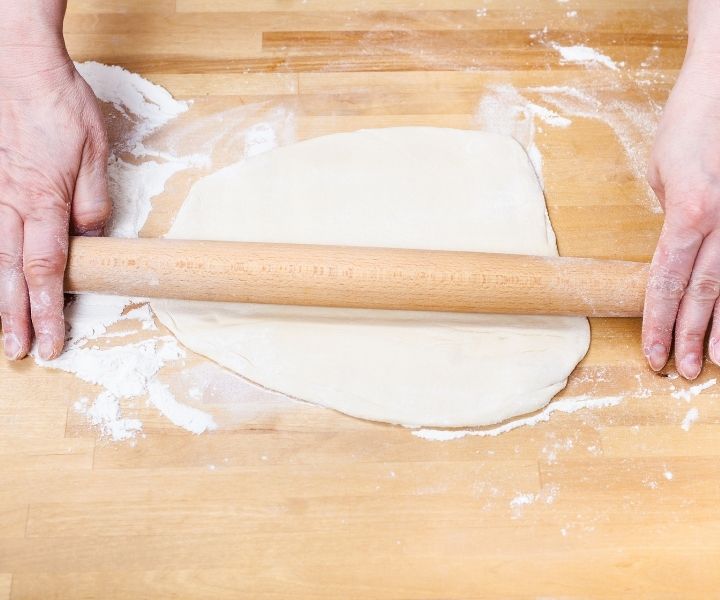
Fresh pasta comes in a variety of forms, from ravioli to taglioni. Gently wrap the dough sheet around the rolling pin and place it on a clean, lightly dusted work area for a simple hand-cut tagliatelle.
Slice the dough roll into preferred strips, carefully lift them in the air and place them on a dishtowel. Continue doing the same with the remaining dough sheets.
How Do You Dry and Store Fresh Pasta?
For family and friends alike, homemade pasta is a delectable treat. However, because most recipes leave you with some leftover dough, it’s essential to know how to store fresh pasta noodles to keep them fresh and flavorful. So, what should a home cook do? If you’re looking for advice on storing homemade pasta, look no further than this guide.
You’ll learn how to store fresh pasta noodles properly, including how to dry and freeze fresh pasta, as well as how to preserve dried homemade pasta and store cooked pasta.
For future use, fresh pasta can be dried, refrigerated, or frozen. The type of storage you use is determined by how long you want to keep your pasta. While some commercially dried pasta can last up to two years in the refrigerator, homemade pasta has a shorter shelf life—typically between two to six months for dry pasta, up to eight months for frozen pasta, or two days in the refrigerator.
Drying Fresh Pasta
Dry fresh pasta if you want to keep it on hand for a longer period after cooking it in volume. This strategy also helps you preserve room in your kitchen refrigerator or freezer. Dried homemade pasta does not need to be refrigerated. Instead, it can be kept on the shelf in an airtight container in a cool, dry location away from direct sunlight.
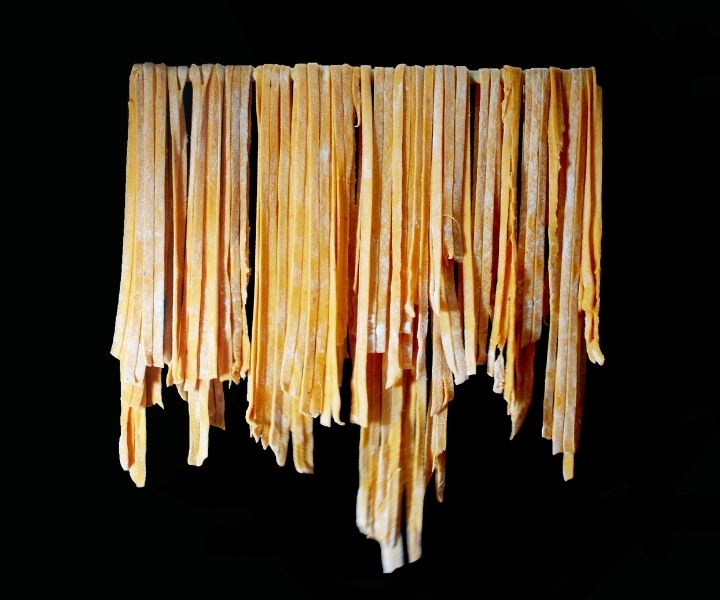
Spread your homemade pasta in a single layer on a large baking sheet to dry for future use. Allow the pasta to sit uncovered for 12 to 24 hours in a dry area, gently stirring and rotating it a few times.
Because flour is temperamental, humidity, temperature, and the size of the noodles will all affect the overall time. When it comes to ensuring that your homemade pasta dries fast and uniformly, a fan can be really useful.
When the pasta is totally dry, it should snap rather than bend when twisted. Store it at room temperature in an airtight container.
Another essential thing to note is that, when making and drying handmade pasta, stay away from making fresh pasta on extremely humid days. If you must make pasta when humid weather and drying conditions are poor, either cook it immediately or freeze it.
Freezing Fresh Pasta
Because the freezing procedure helps you keep all of the flavors in homemade pasta for longer, it’s often a better alternative than preserving fresh pasta in the fridge.
Choose the freezer technique to keep pasta fresh for several months. Freeze it instead of refrigerating it if you only need to keep fresh pasta for a day or two. The humidity in the refrigerator can change the flavor and texture of the food and increase the growth of bacteria.

Place the baking sheet of cut pasta in the freezer for about 15 minutes, or until the individual pieces aren’t clinging to one other or the pan, to freeze homemade pasta.
Perhaps you cooked fresh pasta in bulk, and you are contemplating if you can freeze cooked noodles? Yes, you can. If you keep the sauce and pasta separate, you’ll have the best luck keeping leftover noodles.
When combining sauce and pasta, keep that in mind, especially if you’re putting leftovers in the freezer since cooked pasta may be frozen if you don’t plan on eating it for many days or weeks.
Because the pasta and sauce need to be defrosted or reheated at different times, you’ll want to store the sauce separately.
To store leftover noodles, follow the procedures below.
Freezing fresh-cooked pasta
When compared to refrigerating pasta, storing pasta in the freezer needs only one more step.
- Allow the pasta to cool somewhat before tossing gently with a little olive oil or cooking oil, approximately one tablespoon oil per eight ounces of cooked pasta. When the spaghetti is frozen, this helps to keep it from sticking together).
Fill airtight bags with the semi-frozen pasta, label, and date. You can store it for up to three months in the freezer.
Refrigerating Fresh Pasta
If you’ve been asking yourself, how long does fresh pasta last in the fridge? Here’s an answer to your question. Fresh pasta can be stored in the refrigerator for one day, but it’s best eaten immediately.
If your meal arrangements change, freeze the refrigerated pasta for longer storage, but only if you do so within one day after cooking it.
Cooking Fresh Pasta vs. Packaged Pasta
Take your handmade frozen pasta straight from the freezer and drop it into a pot of salted boiling water when you’re ready to cook it. If you’re creating a noodle soup, bring the stock to a boil and then add the noodles right to the pot. It is not advisable to thaw uncooked pasta first because the texture will be affected.
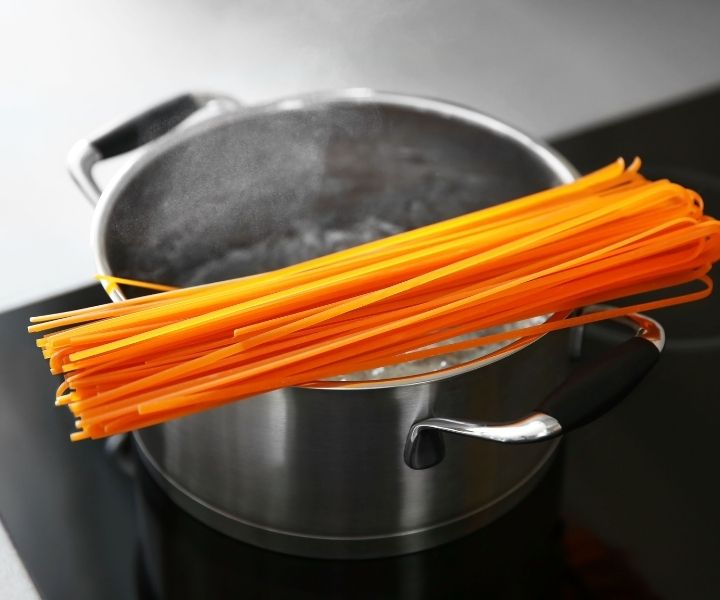
After making your noodles, you might be wondering how long to cook fresh pasta for it to be ready without tampering with its flavor. Don’t worry. We are going to explain to you how long it takes to cook fresh pasta.
Pasta made-from-scratch cooks far faster than store-bought dry pasta. Here’s a quick rundown of approximate cooking times for pasta in lightly salted boiling water:
- Two to three minutes for fresh pasta that hasn’t been dried or frozen.
- Three to five minutes, depending on the size of the frozen pasta.
- Four to seven minutes, depending on the size of the fresh pasta, air-dried.
How Long Does Fresh Pasta Last?
How long does fresh pasta last in the fridge and freezer? This is a question that most lovers of homemade fresh pasta ask.
If stored in the fridge, fresh pasta should be used within two days of purchase; if kept in the freezer, it should be consumed within two to three months. However, it cannot be held in the pantry and will dry out because it includes raw eggs.
But if you have cooked fresh pasta leftovers, they can be stored in the refrigerator for up to five days or frozen for up to two months.
Preventing Contamination of Fresh Pasta
Working with pasta and other foods needs a clean working environment to avoid infection. Before handling the pasta dough, make sure to wash your hands properly. Cleanliness is required in the work area, cutting boards, and utensils.
Until it has been well washed and dried before use, do not use the same cutting board for cutting pasta as it used for cutting raw meat. After you’ve completed making the pasta, make sure to clean the work surface and any tools carefully.
The eggs in the dough might be a source of salmonella. Cleaning the area with hot soapy water can assist in removing any bacteria remnants.
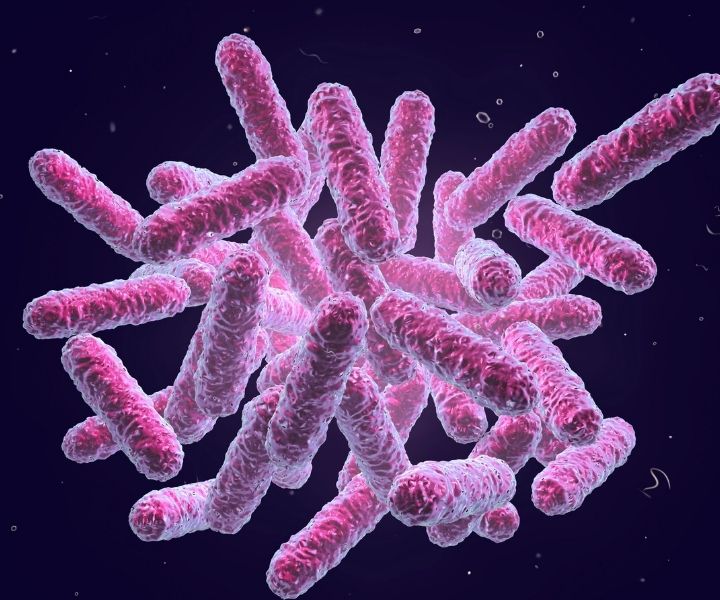
If you use a pasta machine, make sure you clean it thoroughly afterward. All remnants of dough should be removed. Avoid using water when washing a hand-cranked machine since it can rust the appliance and render it useless.
The easiest approach to cleaning whatever machine you have is to consult the manufacturer’s user handbook.
Fresh egg pasta dough should never be tasted uncooked, as with any dough containing raw eggs. It’s also crucial that the eggs used in the dough have been carefully handled and kept. Use the freshest eggs you can find.
Eggs should be kept in their original carton in the refrigerator and in the refrigerator’s coldest section, where the temperature is kept consistent.
Temperatures no greater than 40°F are optimal for storing eggs. Therefore, temperatures should be between 33 and 38 degrees Fahrenheit. Temperatures below 40°F do not kill salmonella germs, but any bacteria present will not thrive.
Frequently Asked Questions
Can You Freeze Cooked Noodles?
Yes, you can. Cook noodles as usual. Rinse with cold water and drain well. Chill for at least an hour until completely chilled.
Pack in a freezer bag or airtight container, label, date, and freeze up to three months (although some recommend freezing no longer than six months). To thaw, just put it in the fridge the night before it is needed, then use boiled water for cooking it again)
Can You Freeze Uncooked Pasta?
Yes. The best way to store uncooked pasta is to put it in an air-tight container to stay fresh and dry, with a paper towel on top of the pasta, which will absorb any liquid that may form in the air-tight container.
How Long Does Fresh Pasta Last in the Fridge?
If stored in a tight-lidded container or airtight jar, fresh pasta should be stored well in the fridge for up to three to four days. After that, Re-freezing will compromise its texture, but it can be cooked straight from the freezer as long as you allow enough time for it to thaw before cooking.
How to Cook Fresh Pasta Safely
Fresh pasta is just as simple to prepare as dried pasta, but it cooks faster. Below are steps on how to safely cook fresh pasta.
- Just bring a big pot of salted water to a boil over medium-high to high heat to cook fresh pasta noodles. Remember to season the water with lots of salt to flavor the pasta properly.
- Carefully drop the fresh pasta noodles into the saucepan after the salted water has achieved a rolling boil.
- To prevent the noodles from sticking together, gently stir them in after they’ve been inserted.
- Be more careful while stirring because if you do it vigorously, it will cause the dough to open. Cooking fresh pasta noodles takes only a few minutes.
- The cooking time may vary depending on the thickness of the noodle and the amount of doneness you desire, but in general, the pasta should be cooked for 90 seconds to four minutes. Cooking time for al dente pasta is usually two minutes or less.
- Remove the pasta from the boiling water and serve with a drizzle of olive oil, freshly grated cheese, and a sprinkle of salt and pepper, or mix the noodles with your preferred sauce.
In a nutshell, safe pasta storage is easy. First, you’ll want to ensure that the pasta remains dry and cool so it doesn’t spoil quickly or develop mold. Otherwise, store in an airtight container on a shelf away from direct sunlight and heat sources like ovens and microwaves. We hope these tips will help you keep your fresh pasta happily!

Community of passionate writers and content creators who share a love for Italian heritage, culture, travel, food, and the Italian-American community. Our mission is to celebrate Italy’s rich history and traditions and connect with others who share the same passion.

